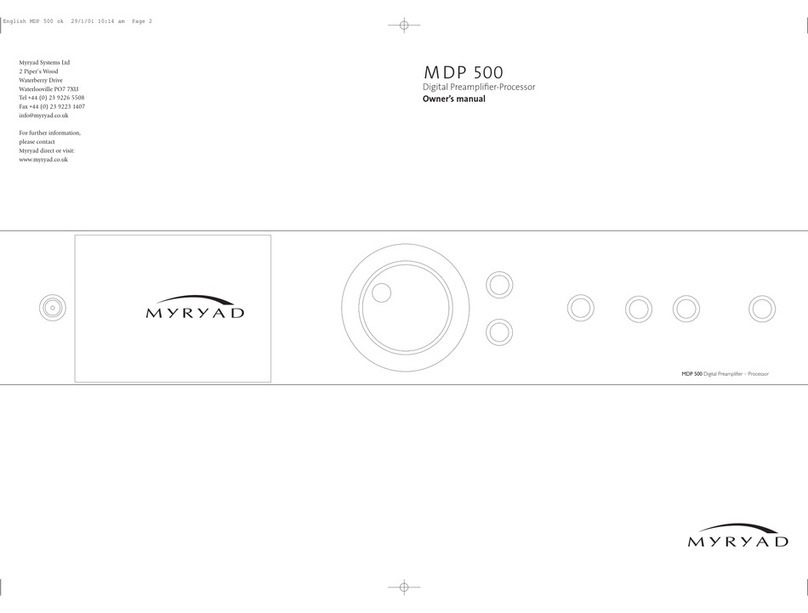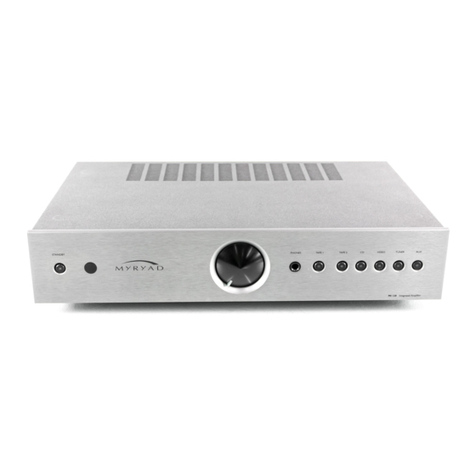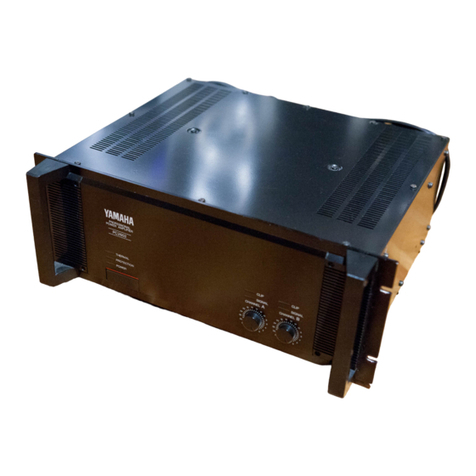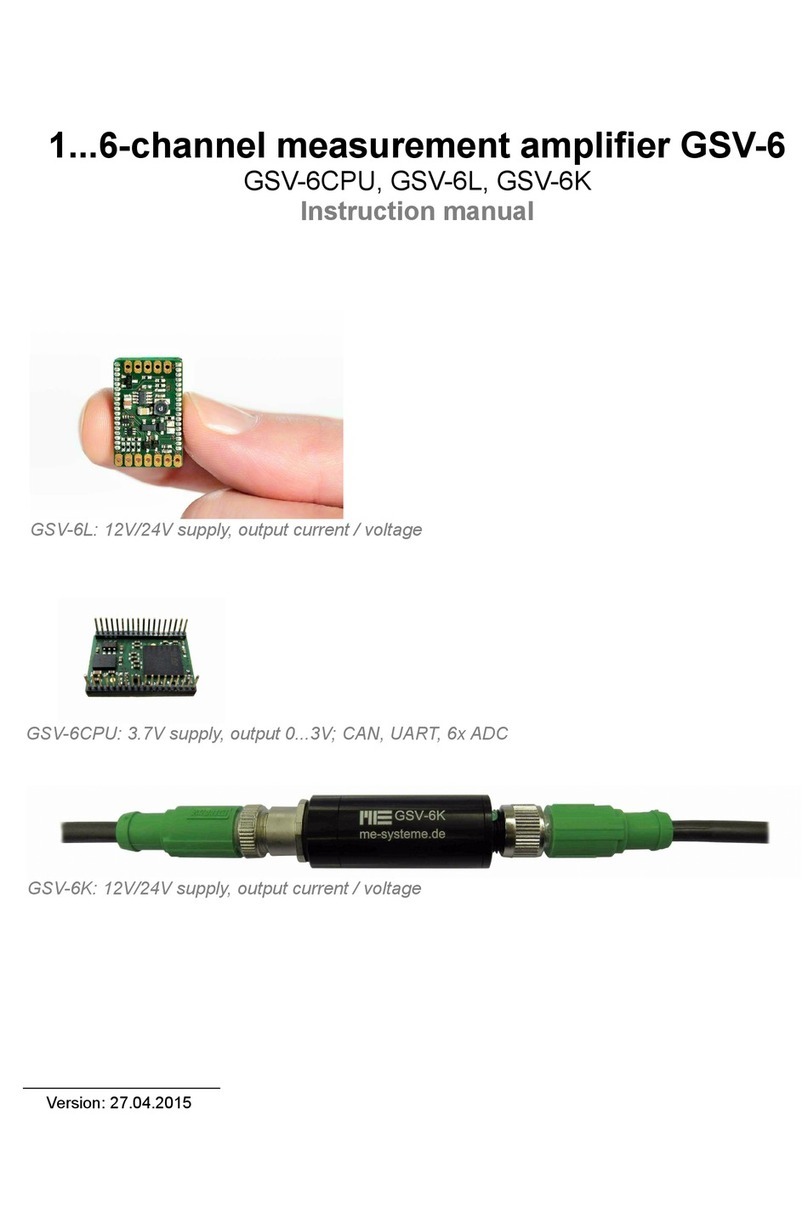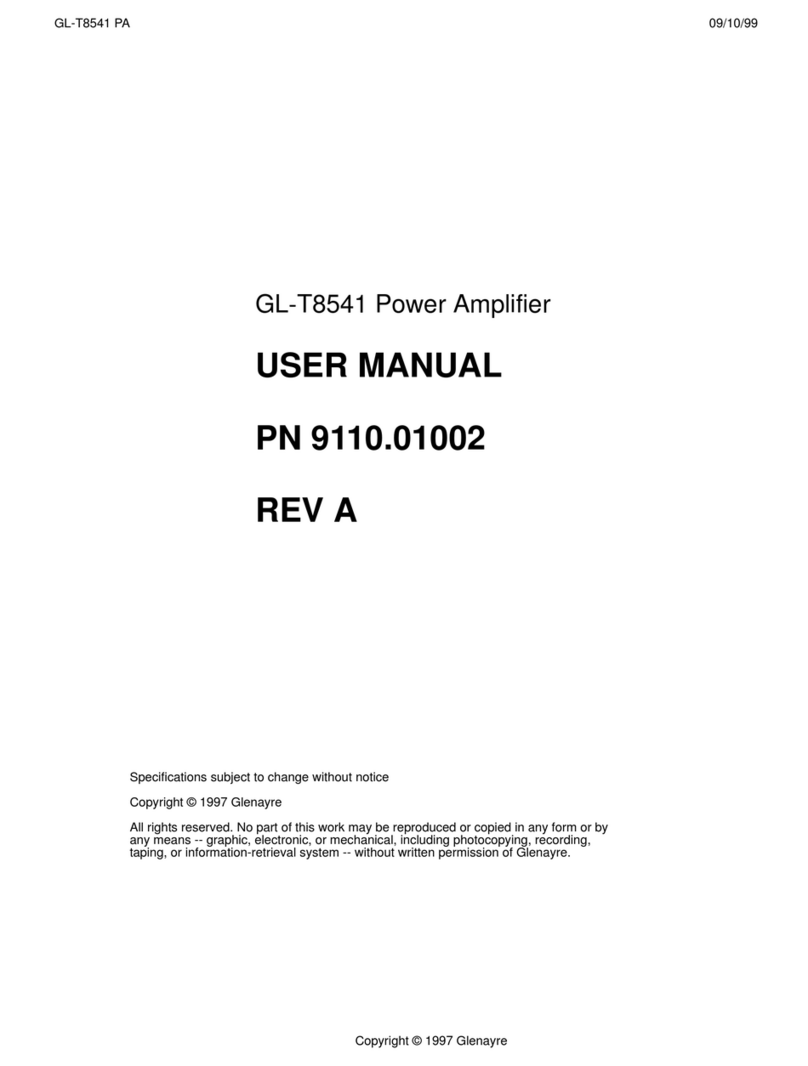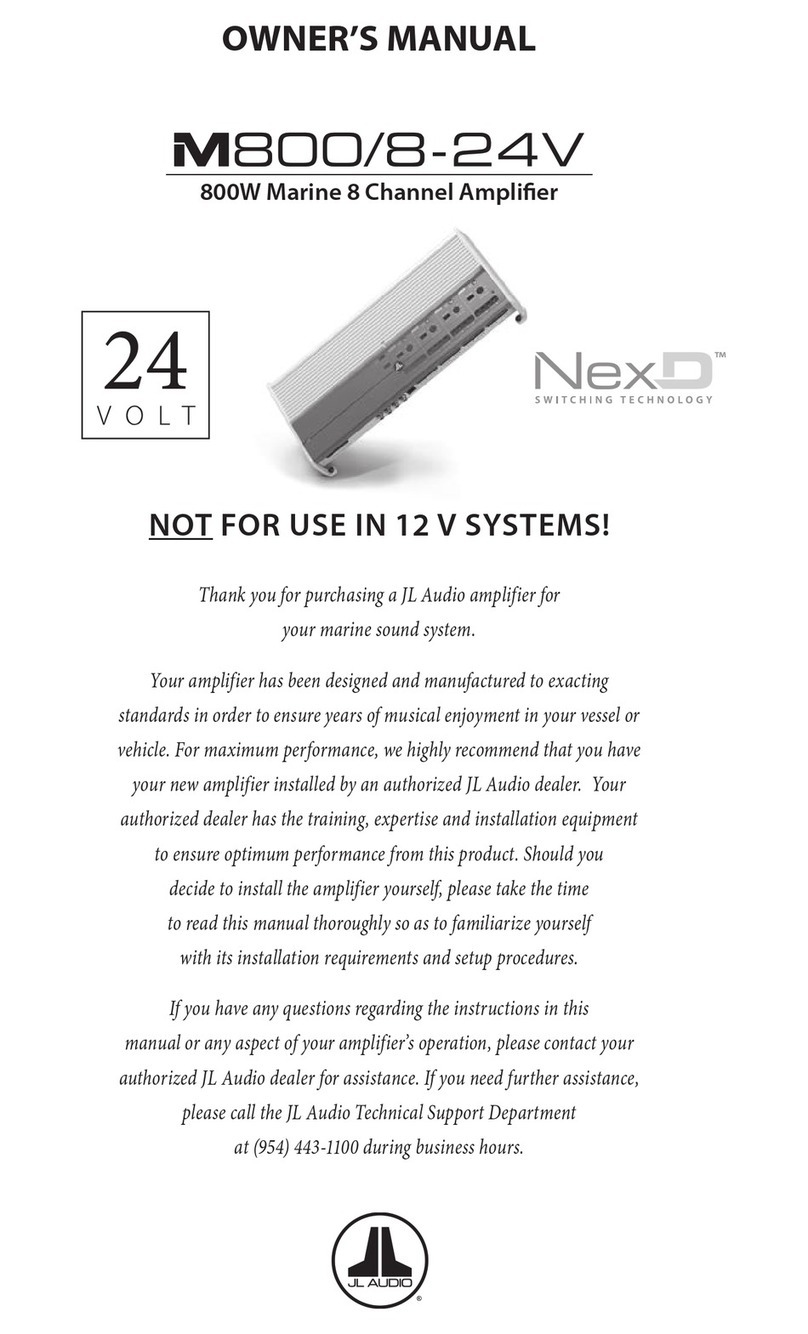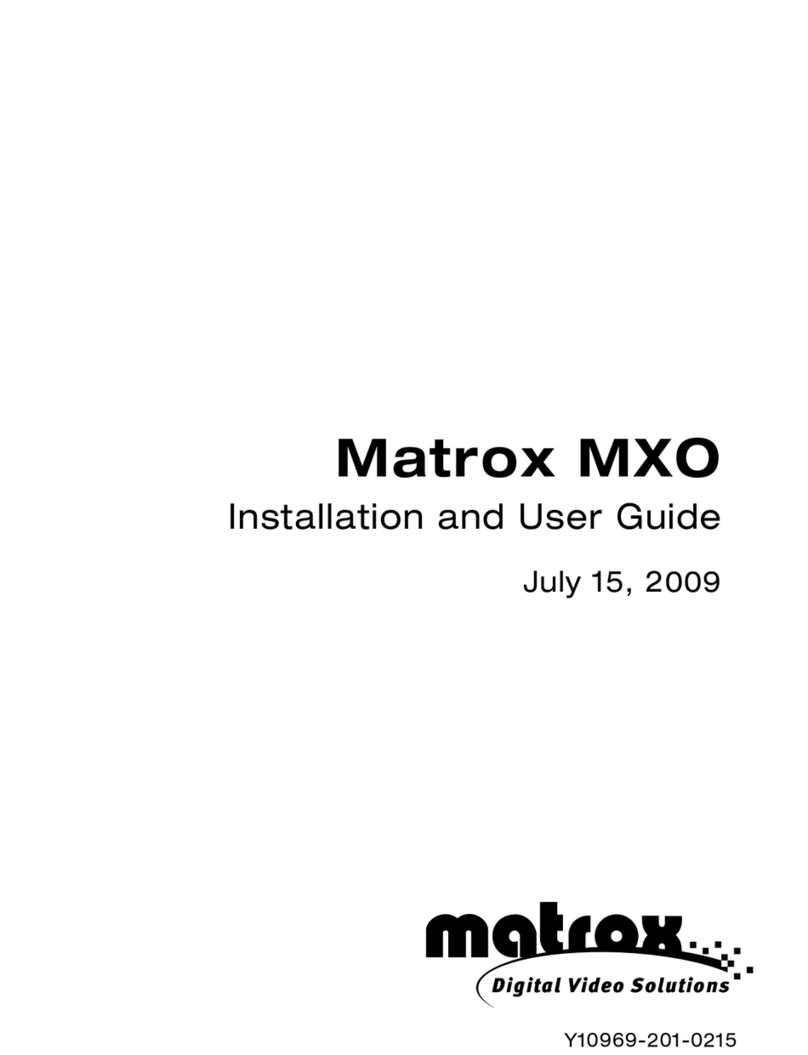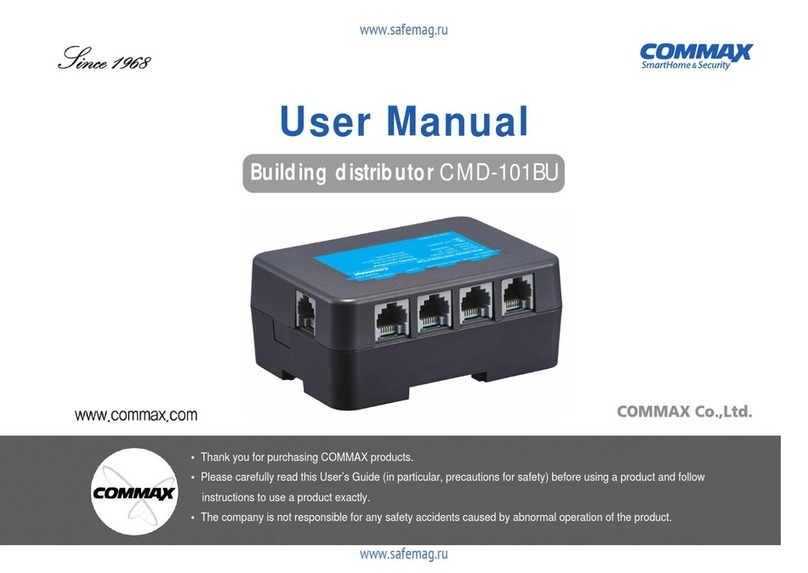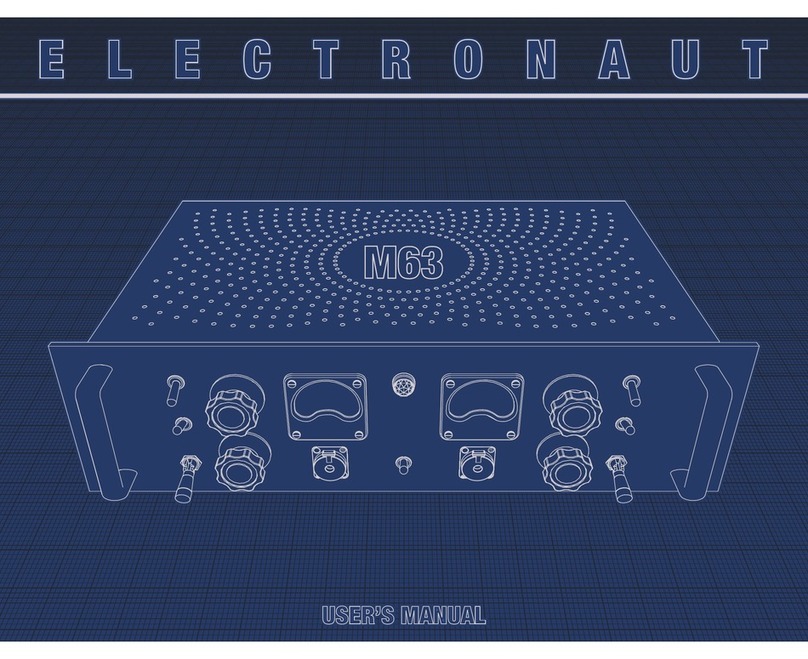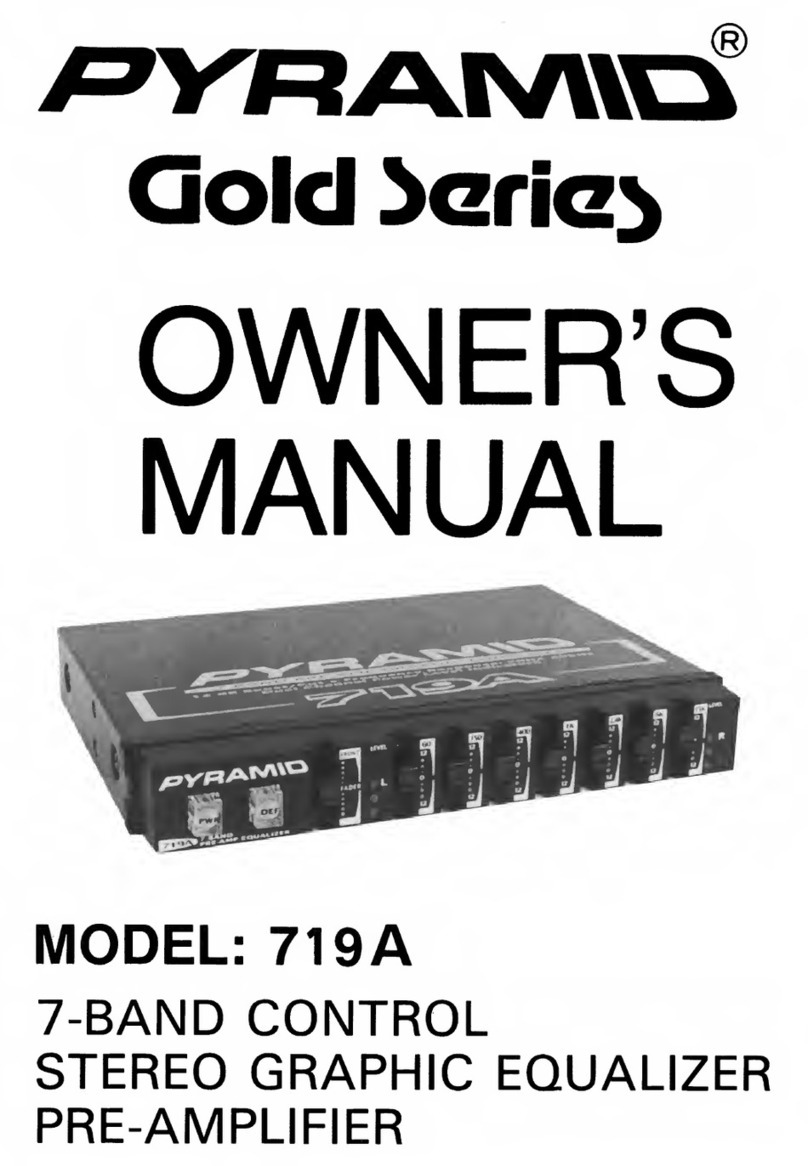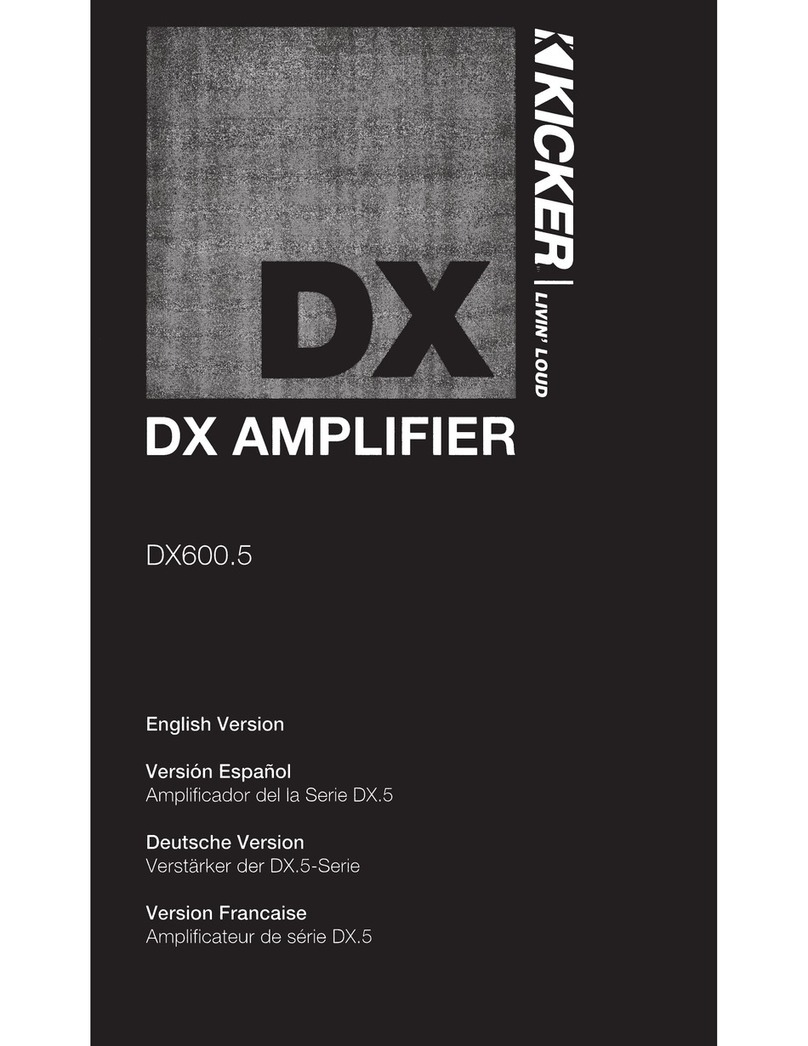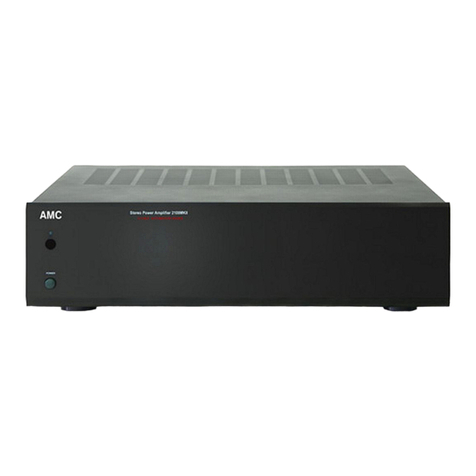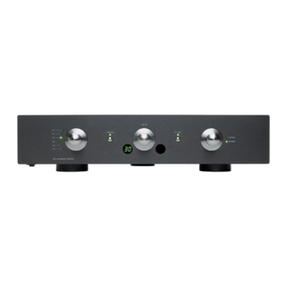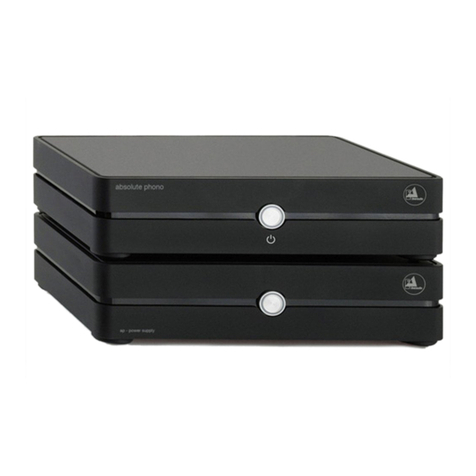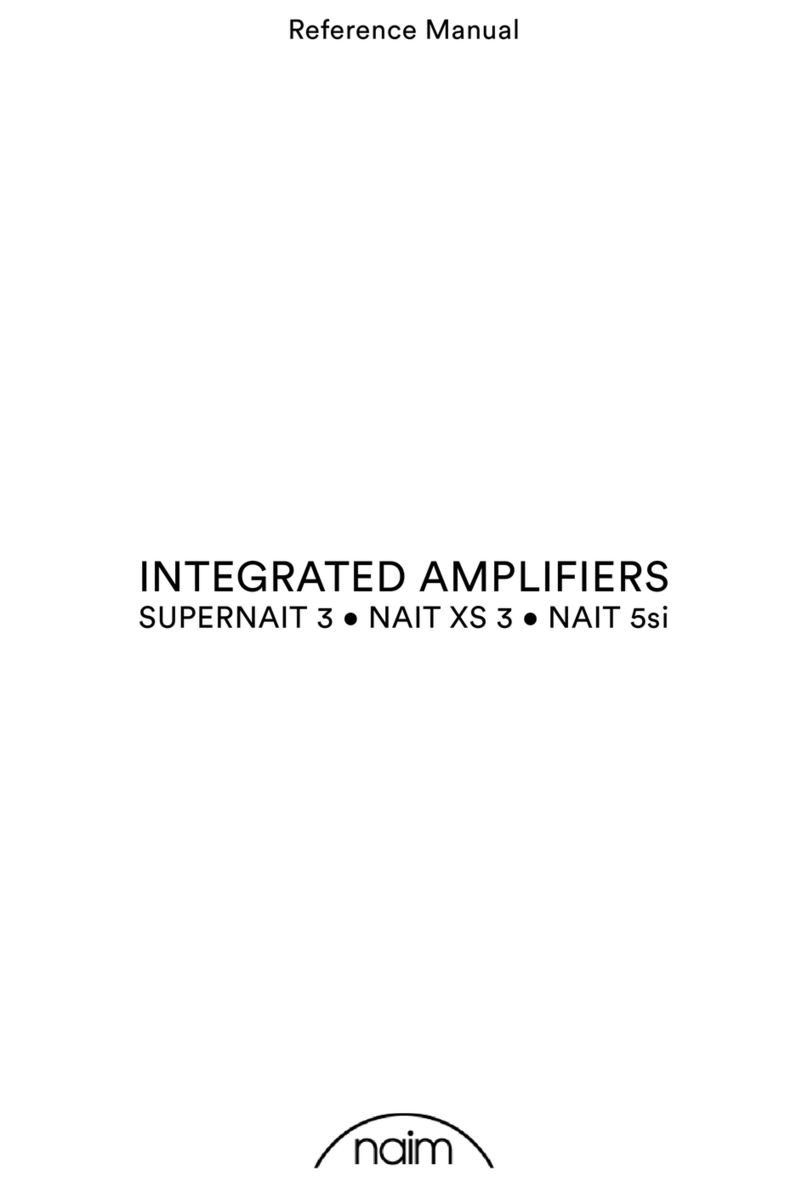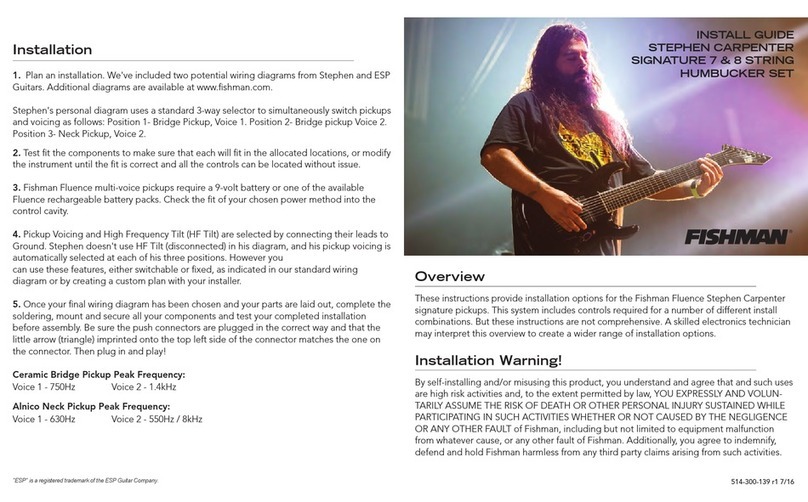Myryad MP100 User manual

mp 100
Remote Controlled Stereo Preamplifier
Owner’s manual
Myryad Systems Ltd
2 Piper’s Wood
Waterberry Drive
Waterlooville PO7 7XU
Tel +44 (0) 23 9226 5508
Fax +44 (0) 23 9223 1407
For further information,
please contact
Myryad direct or visit:
www.myryad.co.uk
MP 100 Stereo Preamplifier
English MP 100 ok 29/1/01 10:22 am Page 2

3
2
contents
• Introduction 2
• Installation and safety notes 2
• Accessories 2
• Setting up your system 3
• Rear panel connections 3
• Operating your system 5
• Front panel controls 5
• Line output muting 6
• Remote control 6
handset operation
• Installing and 6
replacing batteries
• Trouble-shooting guide 7
• Spefications 7
introduction
The Myryad MP 100 Stereo Preamplifier
has been designed to offer a combination
of high quality sound reproduction and
elegant styling.
The preamplifier can accept up to six
line-level input sources, including two tape
recorders. Three pairs of line outputs are
provided (one pair Z-balanced) and a
headphones output. All functions – input
selection, volume and standby – can be
operated using the infra-red remote
control handset.
The MP 100 offers a range of expansion
possibilities:
• The AUX. input can be converted to
accept the output from a phono
cartridge by installing a Myryad Phono
Cartridge Pre-Amp Module.
• The three sets of line outputs allow
easy connection in a wide variety
of multi-amplifier systems.
• The “My-Link” input/output can be
coupled to other Myryad products
which can then be remote-controlled
via the MI 120's infra-red receiver.
installation and
safety notes
This preamplifier generates very little heat
but still requires some ventilation. Do not
place it on a rug or other soft surface into
which it could sink, obstructing the air inlets
in its underside. Do not allow any obstruction
to the ventilation slots in the rear panel. The
MP 100 should not be placed in a built-in
installation such as a bookcase or rack unless
proper ventilation is provided.
CAUTION:TO PREVENT A FIRE OR SHOCK
HAZARD, DO NOT PERMIT THIS PRODUCT TO
BECOME WET. IF LIQUID IS ACCIDENTALLY
SPILLED ON IT, IMMEDIATELY SHUT OFF ITS
POWER AT THE WALL SOCKET AND UNPLUG
THE AC POWER CORD. ALLOW SUFFICIENT
TIME FOR COMPLETE EVAPORATION TO OCCUR
BEFORE OPERATING THE PREAMPLIFIER AGAIN.
IF THE LIQUID IS ANYTHING BUT WATER
AND/OR ALCOHOL,THE PREAMPLIFIER SHOULD
BE EXAMINED BY A QUALIFIED SERVICE
TECHNICIAN BEFORE IT IS USED AGAIN.
Do not remove the cover, or attempt to
modify or repair the preamplifier yourself.
Refer all servicing to a qualified technician.
accessories
Your MP 100 is supplied complete with
the following accessories:
• Separate mains power cord to suit
country of sale.
• System remote control handset.
• Four AAA batteries for handset
(not in some countries).
play
rec
aux
tuner
cd
video
gnd
tape 2
tape 1
play
rec
rlrl
power
onoff
9
10
11
12
setting up your
system
rear panel
connections
1Power inlet
Before making any connection, check that
the mains voltage setting printed on the rear
panel is the same as your local mains supply.
Plug the female (socket) end of the power
cord into the power inlet on the rear of the
preamplifier. Plug the male (plug) end of
the cord into a “live” wall socket or a suitable
heavy duty extension cable.
UK version: The mains plug is supplied fitted
with a 5A fuse. It should only be replaced
with a fuse of the same rating (5A) which
complies with BS1362.
2Power switch
Press one side of this rocker switch (the side
nearer the edge of the rear panel) to switch
the preamplifier ON and the other (towards
the audio connectors) to switch it OFF. When
the POWER switch is in the OFF position all
power is disconnected from the preamplifier.
In this condition the preamplifier cannot be
powered up from the front panel or the
remote control. When the POWER switch
is in the ON position (and the power cord
correctly inserted and plugged in to a live
wall socket) the preamplifier will power up
in standby mode (see FRONT PANEL
CONTROLS, STANDBY, page 5).
It is recommended that the POWER switch
is turned OFF if the preamplifier is not going
to be used for an extended period of time.
3My-link input/output
When the MP 100 is used in a system with
other Myryad products all may be joined
together via the My-Link. This will allow
all the different products to be remotely-
controlled via the infra-red receiver on the
MP 100. My-Link offers two benefits. Firstly,
only the MP 100 infra red receiver needs to be
in “line-of-sight” from the remote handset.
Secondly, the My-Link allows remote control
of some Myryad products which do not have
their own infra-red receiver.
4Line outputs 3, Z-balanced (XLR jacks)
These outputs are designed to feed power
amplifiers fitted with balanced inputs. They
are wired “Z-balanced” which means that
the “cold” line impedance (pin 3) precisely
matches that of the “hot” line (pin 2), but
the “cold” line carries no signal. This allows
full benefit to be gained from all the
interference and ground loop rejection
capabilities of the power amplifier’s balanced
inputs without the additional circuitry (and
resulting signal degradation) of push-pull
outputs. For more information on how the Z-
balanced system works, please ask for a copy
of the Myryad white paper on this subject,
or visit www.myryad.co.uk/technology.html.
5Line outputs 1and 2(RCA phono jacks)
These two outputs carry exactly the same
signals and are both wired “unbalanced”.
In a normal preamp/power amp system,
use the Line 1 outputs to drive the inputs
of your stereo power amplifier (such as the
Myryad MA 120). In a “bi-amplifier” system
connect the Line 1 outputs to one stereo
power amplifier (driving e.g. the treble
sections of the loudspeakers) and connect
the Line 2 outputs to the second stereo power
amplifier (driving the bass sections of the
loudspeakers). For more information on
this and other multi-amplifier systems with
Myryad products, please ask for a copy of
the Myryad white paper on this subject, or
visit www.myryad.co.uk/technology.html.
6Tape 1input/output
These connectors are suited to any type
of tape recorder, including high-quality
“3-head” types which allow you to monitor
the signal off the tape whilst it is being
recorded. Connect a stereo cable from the
TAPE 1 REC output sockets of the pre-
amplifier to the LINE IN or RECORD IN
sockets on your tape deck. Connect a second
stereo cable from the TAPE 1 PLAY input
sockets of the preamplifier to the LINE OUT
or PLAY OUT sockets on your tape deck.
Any source selected for listening on the MP
100 will automatically be fed to the TAPE 1
REC output sockets for recording. If the TAPE
2 input is selected then tape copies may
be made from TAPE 2 to TAPE 1. It is NOT
possible to copy from TAPE 1 to TAPE 2.
7Tape 2input/output
These connectors are suited to any type
of tape recorder, but “off-tape” monitoring
is not possible using TAPE 2. The wiring from
TAPE 2 to your tape deck is identical to the
TAPE 1 wiring described above.
Any source selected for listening, except TAPE
1, will automatically be fed to the TAPE 2
REC output sockets for recording. It is NOT
possible to record from TAPE 1 to TAPE 2.
8CD input
Connect the audio output cables from a CD
player to these sockets. (NOTE: this input is
for an audio signal, not for the digital output
English MP 100 ok 29/1/01 10:22 am Page 2

5
4
front panel
controls
1Standby
When the preamplifier is plugged into a live
wall socket and the POWER switch is turned
ON, it will power up in “standby” mode
and the LED (Light Emitting Diode) in the
STANDBY button will glow red. In this
mode the internal circuitry of the MP 100 is
powered up but isolated by relays at its inputs
and outputs and consumes very little power.
When the STANDBY button is pressed the
preamplifier circuitry will be activated and
the input used last automatically selected.
The LED in the STANDBY button will change
to blue, the LED in the button of the selected
input will light up and, after a few seconds
delay, the line outputs will be connected to
the preamplifier. During this delay period the
LED in the volume control knob will flash to
indicate that the line and headphones
outputs are muted. When first switched out
of STANDBY after POWER ON, the CD input
will be selected by default.
When the STANDBY button is pressed again
the preamplifier will be returned to standby
mode. The LED in the STANDBY button will
glow red again and all other LEDs on the
preamplifier will be extinguished.
CAUTION:WHEN IN STANDBY MODE THE
INTERNAL CIRCUITRY OF THE MP 100 IS STILL
LIVE, SO ALL SAFETY PRECAUTIONS MUST
BE FOLLOWED.
2Infra-red receiver window
The infra-red (IR) remote control receiver is
mounted behind this circular window. It must
therefore not be obscured when the pre-
amplifier is to be operated using the remote
control handset. Where possible it is best
to arrange that the IR window is in
“line-of-sight” of the remote handset.
3Volume control
The volume control adjusts the sound level
for both loudspeakers and headphones.
It does not affect the signals fed to the TAPE
1 and TAPE 2 REC sockets so it can safely
be adjusted whilst making a recording.
The blue LED pointer in the volume
control illuminates when the preamplifier
is operating. The pointer may also be used
to facilitate manual operation of the control.
When the MUTE mode is engaged using the
remote control, the volume control pointer
will flash repeatedly to indicate this condition.
Always press MUTE on the remote handset
again to disengage the function before
advancing the volume control setting.
4Headphones socket
The headphones socket will accept a standard
1/4" (6 mm) stereo jack plug or adapter.
All types of headphones of any impedance
may be used, with one exception: most
electrostatic headphones cannot be driven
directly from a preamplifier.
Insertion of a plug into the headphones
socket automatically mutes all Line outputs,
thus silencing any loudspeakers. In order
to re-activate the Line outputs and resume
listening to loudspeakers you must unplug
the headphones from this socket.
5Tape 1(monitor)
When you press the TAPE 1 button you
can hear the output signal from a tape deck
connected to the TAPE 1 PLAY sockets on
the rear panel. This is a “toggle” function
switch: you press it once to engage and press
again to disengage. The blue LED in the
centre of the TAPE 1 button illuminates
to indicate that TAPE 1 is engaged.
Pressing the TAPE 1 button has no effect
on the other input select buttons. The signal
source selected by the other input select
buttons will be fed to the TAPE 1 REC
output sockets, irrespective of whether the
TAPE 1 button is engaged or not. Thus,
if you have a “three-head” tape deck that
permits off-tape monitoring you can use
the TAPE 1 button to switch back and forth
between the source signal and the off-tape
signal, to check its quality, whilst the
recording is in progress.
NOTE: IF THE TAPE 1BUTTON IS ENGAGED
WITH NO SIGNAL SOURCE CONNECTED TO
THE TAPE 1PLAY SOCKETS, OR WITH NO TAPE
RUNNING, THEN YOU WILL HEAR ONLY
SILENCE, REGARDLESS OF THE SETTINGS OF
ANY OF THE OTHER CONTROLS.
6Tape 2input select
When you press the TAPE 2 button you
can hear the output signal from a tape deck
connected to the TAPE 2 PLAY sockets on
the rear panel. The same signal will also be
fed to the TAPE 1 REC output sockets, so
allowing a tape to be copied from a playback
tape deck connected to TAPE 2 to a recording
tape deck connected to TAPE 1. The blue
LED in the centre of the TAPE 2 button
illuminates to indicate that TAPE 2 is engaged.
Pressing the TAPE 2 button disconnects
all signals from the TAPE 2 REC output
sockets. It is therefore not possible to make
a recording onto a tape deck connected to
the TAPE 2 sockets when the TAPE 2 button
is engaged.
standby phones tape 1cd video tuner aux
tape 2
operating your
system
from your player.) If you do not have a CD
player then any other line level source may
be connected to this input.
9Video input
Connect the audio signal output cables
from a video-related source such as video
cassette recorder or TV set to these sockets.
Alternatively any other line level source may
be connected to this input.
10 Tuner input
Connect the audio output cables from a radio
tuner to these sockets. If you do not have a
tuner then any other line level source may be
connected to this input.
11 AUX input
The audio output from any line level source
may be connected to this input. Alternatively
a Myryad Module may be fitted internally
in your MP 100 to convert this input for
other applications – such as phono cartridge
input for a record player. Your Myryad dealer
can advise you on what Modules are currently
available. Please follow the instructions
supplied with the Module when making
all connections.
12 Ground terminal
This terminal (marked GND) is provided
for grounding a record player connected
to the AUX. input when a Myryad Phono
Cartridge Pre-Amp Module is fitted.
English MP 100 ok 29/1/01 10:22 am Page 4

7
6
specifications
Line inputs
Input impedance....................................................................................................................................................10kΩ/420pF
Input sensitivity..............................................................................................................................................................200mV
Signal/noise ratio, A-weighted ....................................................................................................................................>105dB
Frequency response, 20Hz– 20kHz ........................................................................................................................+0/-0.2dB
Line outputs
Nominal output level ............................................................................................................................................................1V
Maximum output level (0.1% THD)................................................................................................................................>20V
Total harmonic distortion, 20Hz–20kHz, 10V output ..........................................................................................<0.005%
Total harmonic distortion, 1kHz, 1V output ..............................................................................................0.0001% typical
Line output impedance ......................................................................................................................................................75Ω
Tape output impedance....................................................................................................................................2kΩ + source Z
Headphones output (suitable for all dynamic headphones, 4Ω to 2kΩ)
Output impedance ............................................................................................................................................................150Ω
Nominal output level....................................................................................................................................3.75V (into 600Ω)
Maximum output level (0.1% THD)..........................................................................................................>15V (into 600Ω)
Physical Specification
Dimensions (width x height x depth) ....................................................................................................436 x 95 x 303mm
Weight Net: ........................................................................................................................................................................6.3kg
Power Requirements
Voltage (set by internal wiring) ................................................................................................................................120/230V
Stock No: OST0011740
Revision A
7CD, video, tuner and AUX.
input selects
When you press one of these buttons
you can hear the output signal from the
source connected to respective input sockets
on the rear panel. The same signal will
also be fed to the TAPE 1 REC and TAPE 2
REC output sockets for recording. The blue
LED in the centre of the chosen button
illuminates to indicate which source has
been selected. Pressing any one of these
buttons, or TAPE 2, will disengage
whichever input was previously selected
and extinguish its LED.
line output
muting
When the preamplifier is in standby mode
all the input and line output connectors are
isolated from the preamplifier by high quality
relays. When the preamplifier is first switched
on from standby mode the line outputs
remain disconnected for a few seconds to
allow the internal voltage levels to settle. The
same process occurs when the preamplifier
is switched back into standby mode.
The line outputs are also muted when the
MUTE button on the R/C handset is pressed.
It is recommended that the preamplifier be
switched into mute before changing input or
output interconnects.
remote control
handset
operation
The nine keys at the top of the handset
operate the MP 100. The first six keys (CD,
TUNER, AUX., TV, TAPE 1 and TAPE 2)
function in exactly the same way as their
counterparts on the front panel, allowing
any input source to be selected for listening
or recording.
Pressing one of the VOLUME 5or 6keys
will cause the motorised volume control in
the preamplifier to rotate clockwise or anti-
clockwise respectively. There is one aspect in
which the remote operation of the volume
control is different from manual operation.
If the preamplifier is in mute mode (after
pressing MUTE on the R/C handset) then
pressing the VOLUME 5key will automati-
cally disengage mute mode and re-connect
the signal to your power amplifier. This
prevents an excessively high volume level
from being set by mistake.Pressing the
MUTE key will engage mute mode. The line
outputs will be disconnected (removing the
signal feed to the power amplifier and
loudspeakers) and the blue LED in the
volume control will flash slowly. MUTE is
a “toggle” function, so pressing the key
again will disengage the mute mode.
The blue STANDBY key at the bottom left
of the handset operates in exactly the same
way as the STANDBY key on the front panel.
Operation of Myryad CD Players and
Tuners. The Myryad A-V System Remote
handset will also control Myryad CD Players
and Tuners. The PLAY, PAUSE, STOP,
SHUFFLE, TIME, REPEAT, SKIP4and SKIP3
keys are for CD Player operation only.
The PRESET, MANUAL, SEARCH, MONO,
STORE, TUNE 5and TUNE 6are for
Tuner operation only.
The remaining keys, the digits 0 to 9 and
DIM, can operate either a CD Player or a
Tuner. To control a CD Player, press the CD
input source select key. Then “0-9” and DIM
will control only the CD Player until the
TUNER input source select key is pressed.
To control a Tuner, press the TUNER input
source select key. Then “0-9” and DIM will
control only the Tuner until the CD input
source select key is pressed.
installing and
replacing
batteries
The remote handset uses four 1.5V type AAA
batteries. To fit new batteries first open the
battery compartment in the rear of the
handset and remove any existing batteries.
Fit the new ones as directed by the symbols
moulded inside the battery compartment,
then replace the battery compartment cover.
The batteries should always be removed if
they are flat (indicated by no remote control
operation or by operation only at very short
range), or if the remote control is not going
to be used for an extended period.
trouble-shooting
guide
some of the most common problems
No sound:
• Power turned off or system in standby
mode. Check that the blue pointer LED in
the volume control knob is illuminated.
• An inoperative input has been selected
(e.g. CD input with no CD playing or
TUNER input with the tuner switched off).
• An input has been selected with no
source connected.
• TAPE 1 or TAPE 2 has been selected with
no tape playing.
• UK version only: The fuse in the mains plug
has failed. Check and replace if necessary.
Sound in one channel only:
• Interconnect cable pulled loose or making
poor contact. Check and, if necessary,
un-plug and re-plug all relevant cables.
Loud buzz or hum:
• Interconnect cable pulled partially out
of its socket.
• Defective interconnect cable.
Incorrect operation – some functions
not working:
• Control processor latched. Switch off
POWER switch on rear panel and wait for
at least one minute. Then switch POWER
switch on and press STANDBY button.
Normal operation should resume.
For further help please visit
www.myryad.co.uk/faqs.html
English MP 100 ok 29/1/01 10:22 am Page 6
Other Myryad Amplifier manuals
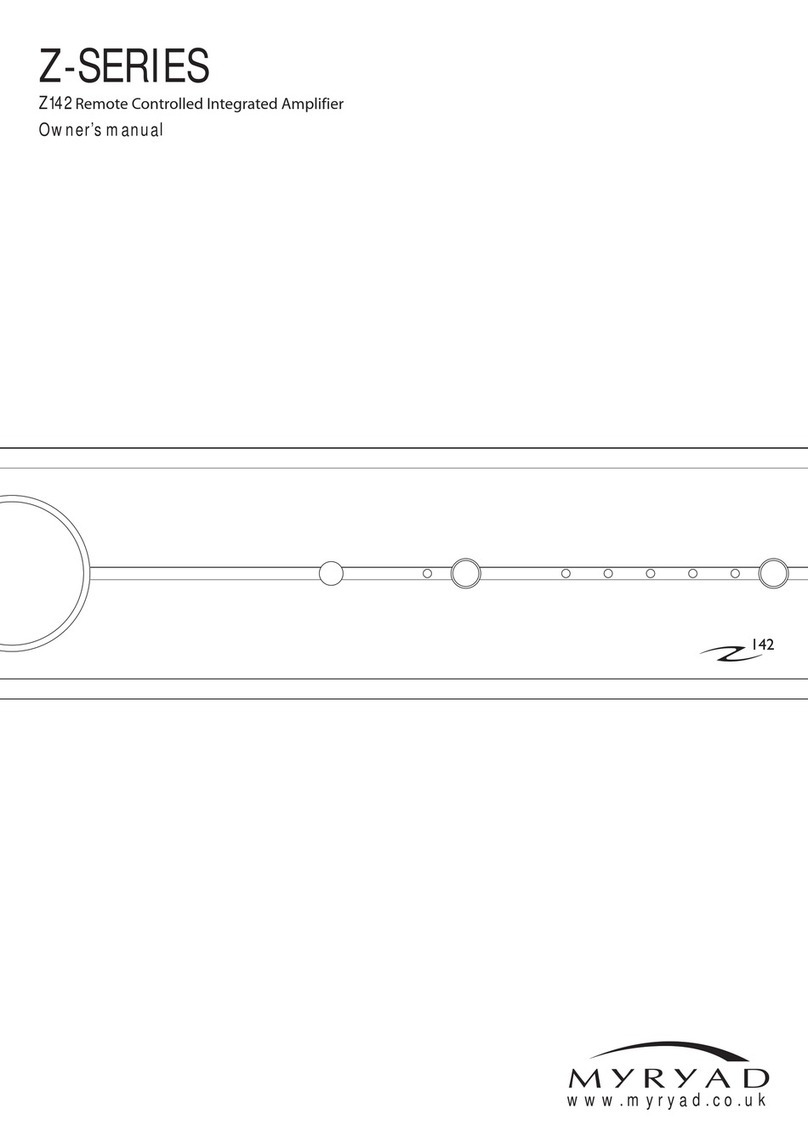
Myryad
Myryad Z142 User manual
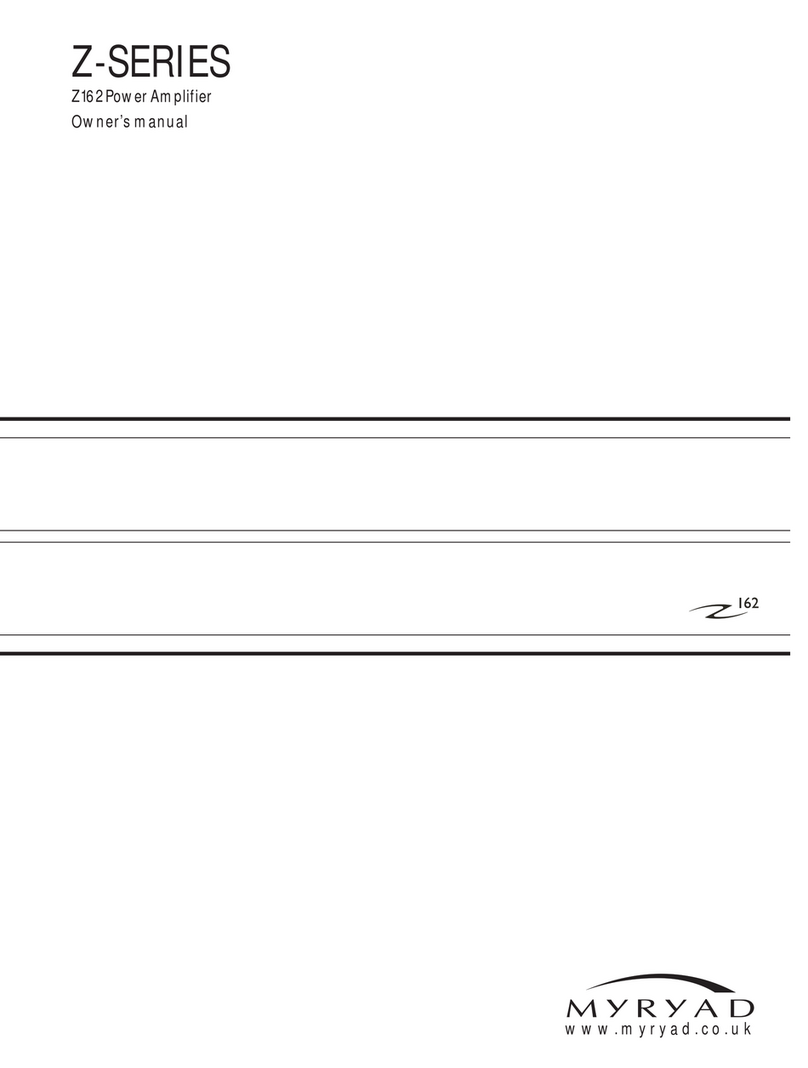
Myryad
Myryad Z162 User manual
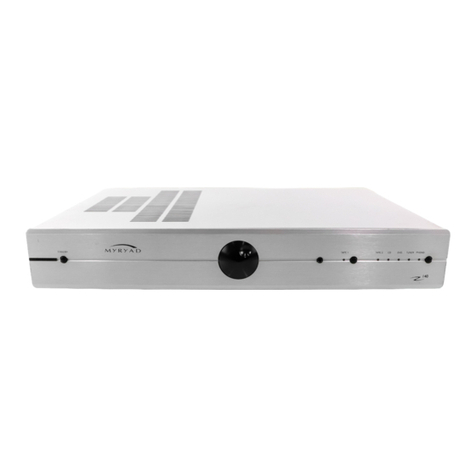
Myryad
Myryad Z140 User manual
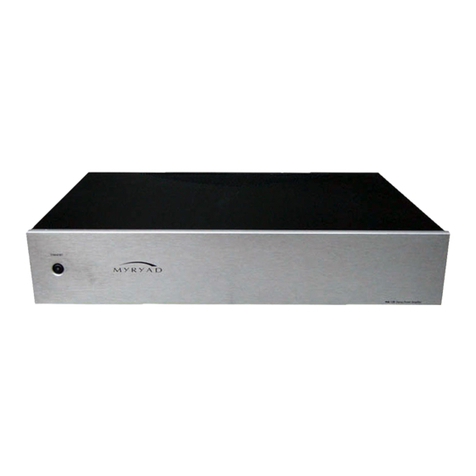
Myryad
Myryad MA120 User manual
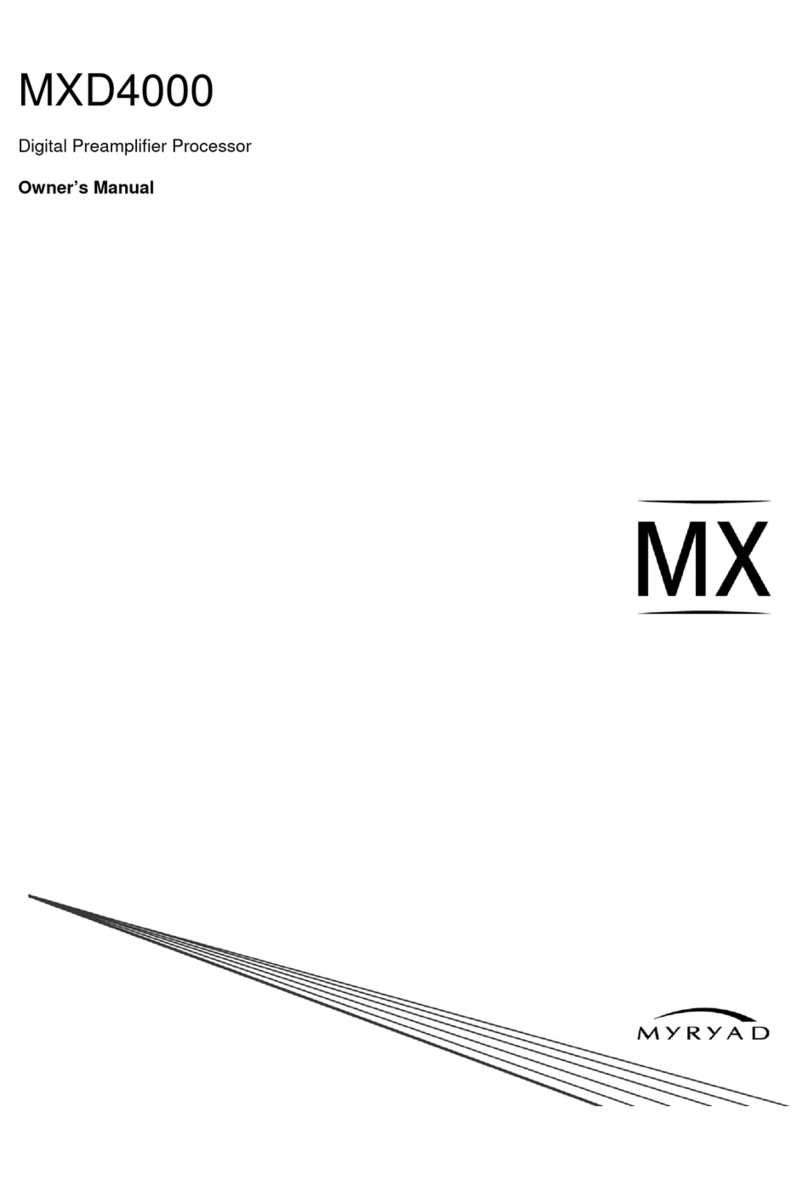
Myryad
Myryad MXD4000 User manual

Myryad
Myryad MI 240 User manual
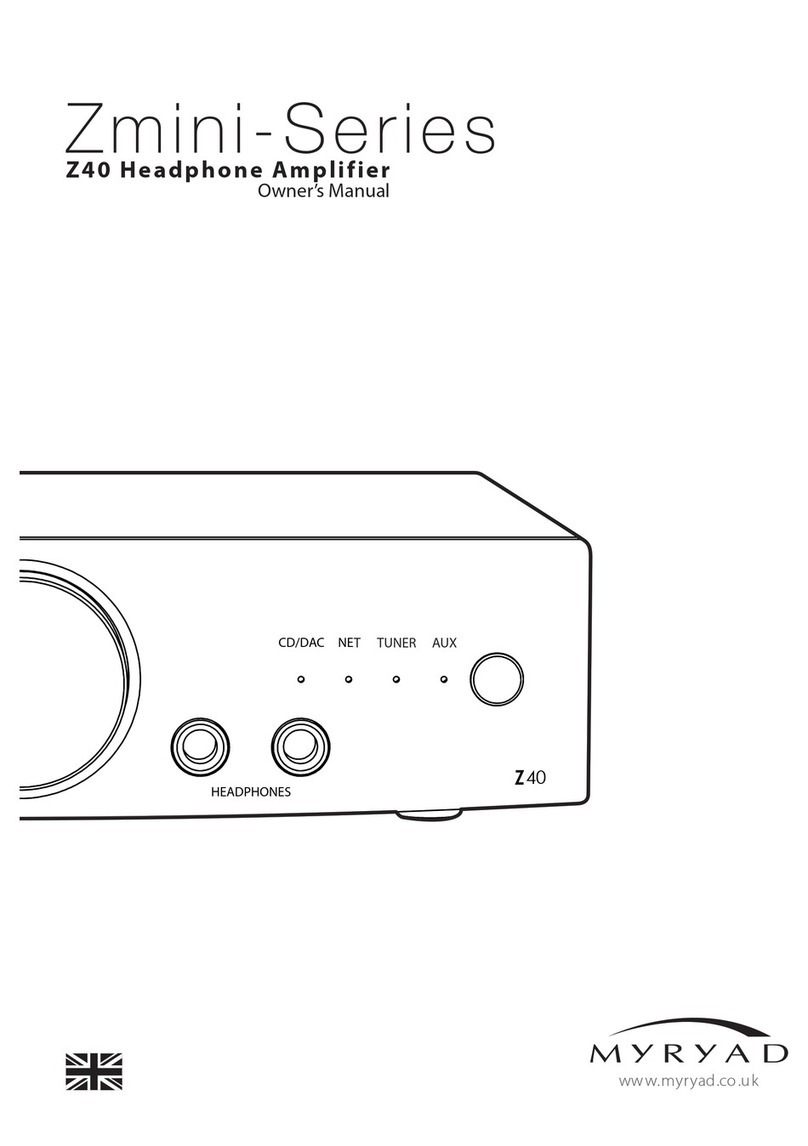
Myryad
Myryad ZMINI Z40 User manual

Myryad
Myryad MA500 User manual

Myryad
Myryad MXA2080 User manual
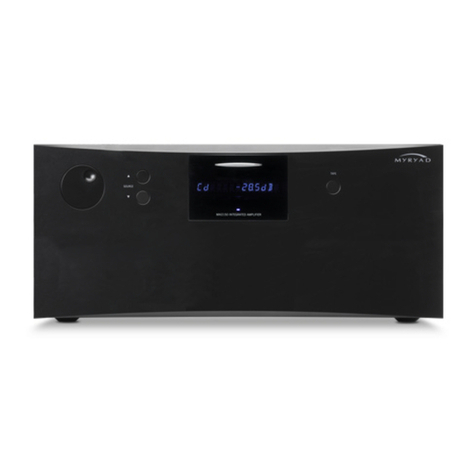
Myryad
Myryad MX Series User manual

